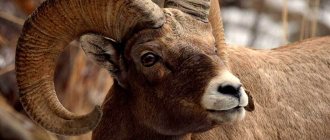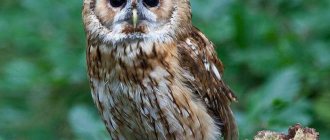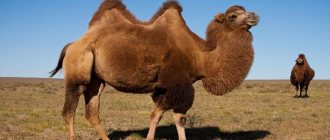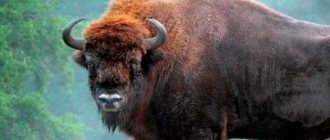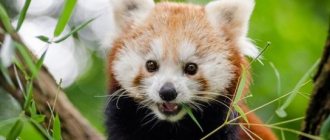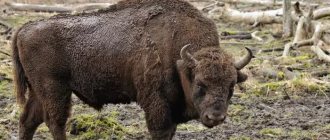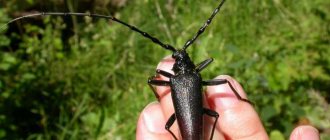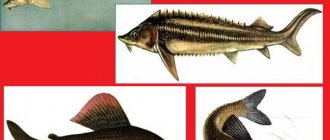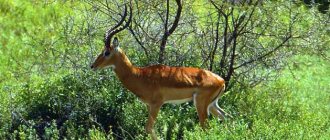- Reports
- Animals
- Wild animals
All animals on the planet are divided into two types: domestic and wild. Each species has been sufficiently studied, but not only domestic animals evoke kind and warm feelings, but also the sometimes inaccessible world of wild animals.
Unlike domestic animals, wild animals are large and strong, who know how to get their own food and protect themselves from enemies. People in the wild cannot admire the stateliness and strength of such animals, so reserves were created where the atmosphere of nature familiar to their habitat was recreated.
Wild animals, in turn, are divided into herbivores and predators, but in addition they are also divided into families: wolves, raccoons, cats, horses, bears, rodents, monkeys, deer, camels, hippopotamuses, bovids, elephants, echidnas and marsupials. Each representative of the species is accounted for, and if the population of the species begins to decline, then scientists notice this and enter it into the Red Book, which imposes special protection on the wild animal from poachers. In this way, the global association prevents wild animals from disappearing.
The wolf family includes more than 30 species of predators, which include wolves, foxes and wild dogs and hyenas. They usually feed on herbivores or domestic animals.
The raccoon family is a fairly small family. These are mainly various types of raccoons and sometimes a panda. Raccoons eat plant matter. So do small animals.
The cat family is one of the largest in number and stately predators of all species of wild animals. These include tigers, lions, paters, leopards and similar animals.
The horse family is a group of non-domestic animals. These include zebras, donkeys, and Przewalski's horses, which no longer exist in the wild. These are herbivores and harmless animals.
Bears are the largest predators. Which can feed on living creatures from fish and birds to roe deer and deer.
Rodents live in trees, fields or earthen burrows. They feed on various seeds. That's why they were called rodents.
Monkeys are similar to humans in many ways; they also eat a wide variety of foods and live in packs.
This way we see how diverse wild animals are, from size and food preferences to habitats and appearance.
Marten
We will not talk about the marten as such, but about all representatives of the mustelid family, which includes: marten, sable, ermine, weasel, mink, otter, ferret. Because of their skins, these taiga animals are the most sought after for hunting. Their meat is not eaten, it is given only to dogs, and only their fur has a price. Martens have complex behavior and paw motor skills developed at the level of a three-year-old child. They love to do gymnastics. Marten cubs spend almost all their time playing. They make cooing noises when playing. Martens live up to 20 years. They feed on rodents, small birds and bird eggs. During the hunt, the marten breaks the vertebrae of the victim's neck, folds its tongue into a tube and drinks blood from the still living victim.
| Ermine with prey | Sobolyonok |
The sable is active at dusk, at night, but often hunts during the day. An individual sable hunting area ranges from 150 - 200 hectares to 1500 - 2000 hectares, sometimes more. The boundaries of the individual area are marked by the secretion of the anal glands. Willingly eats plant foods. Favorite food: pine nuts, rowan berries, blueberries. Willingly eats lingonberries, blueberries, bird cherry, rose hips, and currants. Nesting shelters are in hollows of fallen and standing trees, in stone deposits, under roots.
Hunting for mustelids is the main activity of professional commercial hunters. They hunt with the help of various self-catchers, mainly bags, dies, and traps. Often they use bait - in the form of a dead bird, for example.
Interesting Facts
- Despite the developed sensory organs, vision is weak and non-colored.
- There are also problems with food. The panda eats only bamboo, so you have a predator.
- The stomach of a predatory animal is like a simple bag.
- The eyes are located on the front of the head to see its prey. This distinguishes them from their herbivorous counterparts.
8
ARTICLE 3: Jaguarundi animal (lat. Puma yagouaroundi)
Hare
Most often, populations of the white hare predominate in the northern forests, and the European hare, the brown hare, is very rare. The brown hare differs from its northern counterpart in that it does not change fur color in winter.
Normally, white hares lead a solitary, territorial lifestyle, occupying individual plots of 3–30 hectares. In most of its range it is a sedentary animal, and its movements are limited to seasonal changes in feeding grounds. Seasonal migrations to forests are typical in autumn and winter; in the spring - to open places where the first grass appears.
| Brown hare | White hare with baby hare |
Mainly crepuscular and nocturnal animal of the forest. Most active in the early morning and early evening hours. Usually feeding (fattening) begins at sunset and ends at dawn, but in the summer there is not enough night time, and hares feed in the morning. Herbivorous forest animal. In the summer, hares in the tundra, escaping midges, switch to daytime feeding. During thaw, snowfall and rainy weather, the hare often does not go out to feed at all. On such days, energy loss is partially compensated by coprophagia (eating excrement). In winter, during severe frosts, the hare digs holes 0.5-1.5 m long in the snow, in which it can spend the whole day and leave only when there is danger. When digging a hole, the hare compacts the snow rather than throwing it out.
From the resting place to the feeding place, hares run along the same route, especially in winter. At the same time, they trample down paths that are usually used by several animals. In winter, even a person without skis can walk along a well-trodden path. When going to bed, the hare usually moves in long jumps and confuses its tracks, making the so-called. “doubles” (returning to one’s own trail) and “sweeping” (big jumps to the side of the trail).
They hunt the hare for its meat and fur. Often, many hunters put nooses on the hare; such hunting is most successful in winter, along the hare trail. Hares provide food for many predators. Hare meat is very dietary and is eaten with an additional source of fat and vegetables. The internal organs of a hare are often affected by parasites.
Tarantula spider
It belongs to the tarantula family and can eat small birds. They mainly live in the state of Queensland, where the climate is very humid. In humans, a tarantula bite causes symptoms of severe poisoning.
In Australia, wild and dangerous animals live not only on land, but also in water. There are a large number of different poisonous sea snakes that live throughout Australia. Mainly in tropical and subtropical zones. Reach two meters in length. About 150 people die each year from sea snake bites.
Article 2: Animals of prey (Latin: Carnivora)
Wolverine
A very cunning and arrogant beast. Leads a solitary lifestyle. Quite daring in his behavior and, at the same time, very careful. It is not so easy to meet him in the forest. The wolverine makes its den under uprooted roots, in rock crevices and other secluded places, and goes out to feed at dusk. Unlike most mustelids, which lead a sedentary lifestyle, the wolverine constantly wanders in search of prey throughout its individual territory, which occupies up to 1500-2000 sq. km. Thanks to powerful paws, long claws and a tail that acts as a balancer, the wolverine easily climbs trees. Has acute vision, hearing and smell. Makes sounds similar to a fox's yelp, but rougher.
| Wolverine with a hunted partridge | wolverine cubs |
The wolverine is omnivorous, does not disdain to feast on carrion, and also likes to eat the leftovers after a meal of larger animals of the taiga, for example, a bear. Mainly hunts white hare, black grouse, hazel grouse, partridges, and rodents. Sometimes hunts larger animals, such as elk calves, wounded or sick animals. It often ruins the winter quarters of hunters and steals prey from traps. In summer it eats bird eggs, wasp larvae, berries and honey. Catches fish - near wormwood or during spawning, willingly picks up dead fish. Hunts birds, grabbing them on the ground when they are sleeping or sitting on nests. He is a nurse, destroying weak and sick animals. Can attack a person if cornered.
Wolverines, like lynxes, are well-tamed animals; in captivity they live up to 17 years, in the wild - about 12.
African elephants
Elephants once roamed freely across the continent. However, times have changed. Massive construction of farms and highways has driven elephants from their natural habitats. Almost all elephants now live on protected areas in central and eastern and southern Africa.
They often have to live in very dense groups, which leads to depletion of food supplies. In search of food, elephants raid the orchards of local farmers, killing anyone who dares to get in their way. In the 1990s, more than 250 people were killed by elephants in Kenya alone.
Beaver
Another animal of the forest, lives everywhere. Habitats: river floodplains. The beaver is a large rodent adapted to a semi-aquatic lifestyle. The beaver has beautiful fur, which consists of coarse guard hairs and very thick silky underfur. Fur color ranges from light chestnut to dark brown, sometimes black. The tail and limbs are black. It is the object of commercial hunting, primarily for its fur; borba meat is also eaten. In the anal area there are paired glands, wen and the beaver stream itself, which secretes a strong-smelling secretion.
| Admiring the results of the work... | Nutria with baby |
The smell of a beaver stream serves as a guide to other beavers about the border of the territory of a beaver settlement; it is unique, like fingerprints. The secretion of the wen, used in conjunction with the stream, allows you to keep the beaver tag in a “working” state for longer due to its oily structure, which evaporates much longer than the secretion of the beaver stream. Due to intensive hunting, by the beginning of the 20th century, the beaver was practically exterminated in most of its range.
Beavers live alone or in families. A complete family consists of 5-8 individuals: a married couple and young beavers - the offspring of the past and current years. A family plot is sometimes occupied by the family for many generations. A small pond is occupied by one family or single beaver. On larger bodies of water, the length of the family plot along the shore ranges from 0.3 to 2.9 km. Beavers rarely move more than 200 m away from water. Beavers communicate with each other using scent marks, poses, beating their tails on the water, and whistling-like calls. When in danger, a swimming beaver slaps its tail loudly on the water and dives. The clap serves as an alarm signal to all beavers within earshot. Beavers are active at night and at dusk.
Beavers live in burrows or huts. The entrance to a beaver's home is always located under water for safety. Beavers dig burrows in steep and steep banks; they are a complex labyrinth with 4-5 entrances. The walls and ceiling of the hole are carefully leveled and compacted. The living chamber inside the hole is located at a depth of no more than 1 m. The width of the living chamber is a little more than a meter, the height is 40-50 centimeters. Huts are built in places where digging a hole is impossible - on flat and low swampy banks and in shallows.
Beavers are strictly herbivorous. They feed on the bark and shoots of trees, preferring aspen, willow, poplar and birch, as well as various herbaceous plants.
Appearance
The length of dangerous predatory animals is from 14 cm to 3 meters. You will never guess that they are relatives, looking at the tiny weasel who has barely gained 100 grams. Of course there is a common denominator. This is the structure of the body.
Predatory animals photos and descriptions
The jaws are equipped with molars and fangs (fourth from above, first from below), allowing them to tear prey.
Predatory animals move only up and down, only in a small group they move to the side. Predatory animals have thick fur as a priority. The color is light, iridescent, black, patterned with stripes or spots.
Wolves are dangerous predatory animals
Limbs with 4-5 movable fingers on each paw and decorated with sharp claws. They are divided into digitigrade, semi-plantigrade and plantigrade. Pinnipeds have a membrane added. Classifications of two subspecies: felines and canines. You can often see their tail. The animals are also valuable fur animals. Their skins are harvested by people.
Muskrat
Here's who, the muskrat is truly the rarest animal of the taiga. It is on the verge of extinction and is listed in the Red Book of Russia. It is almost impossible to meet her on the shores of taiga reservoirs. Found mainly in the southern taiga and mixed forests of Europe. A relatively large animal: the body is 18 - 22 cm long, the tail is the same, weight up to 520 g. Muskrats are practically blind, but have a developed sense of smell and touch. Most often they prefer to settle in closed floodplain reservoirs. For most of the year, the animals live in burrows with one exit. The exit is underwater. The main part of the passage is located above the water level.
| Muskrat underwater | Muskrat |
In summer, muskrats live alone, in pairs or in families, and in winter, up to 12-13 animals of different sexes and ages can live in one hole. Each animal has temporarily visited burrows located at a distance of 25-30 m from one another. The muskrat swims this distance along the connecting trench during the normal period of its stay under water - 1 minute. The muskrat cannot move quickly on the earth's surface and becomes a victim of predators.
The muskrat in Russia has been brought to the brink of extinction by factors such as deforestation of floodplain forests, pollution of water bodies where animals live, drainage of floodplain lands, which worsens conditions for food production and protection, construction of dams and dams, as well as development on the banks of reservoirs, creation of reservoirs, grazing near water bodies.
Currently, the muskrat can be preserved thanks to special methods and non-traditional organizational forms, namely the creation of specialized hunting farms, the main principle of which is the rational use and protection of these animals. Natural factors that negatively affect its numbers include long-term winter floods and high water levels.
African buffalo
The African buffalo is rightfully considered one of the most dangerous animals on the African continent. According to statistics, these huge wild animals are responsible for the largest number of human deaths. Weight is about a ton. For most of the day, these herbivores graze peacefully. But once a buffalo is frightened or angered, it will attack without hesitation both any predator and a person.
Most often, the victims of buffaloes are local residents, who value these animals for the unusual shape of their horns. Hunting African buffalo is not prohibited, but it is extremely dangerous. In terms of running speed, a buffalo is not inferior to a horse. Having pounced on an opponent, he can easily disembowel him with an unusually accurate blow of his hoof or horns.
Squirrel
One of the cutest animals in the northern forests. Looking like a toy, the squirrel attracts the attention of children. The squirrel is not dangerous to humans, except that it may scratch if it senses a danger to its offspring. One of the well-known distinctive features of many squirrels is their ability to store nuts for the winter. Some species bury nuts in the ground, others hide them in tree hollows. Scientists believe that the poor memory of some types of squirrels, in particular gray squirrels, helps preserve forests, since they bury nuts in the ground and forget about them, and new trees appear from sprouted seeds. Squirrel is a source of valuable fur. It is the object of commercial hunting. A squirrel skin costs between 50 and 100 rubles.
| Squirrel with a cone | Little squirrel |
Unlike hares or deer, squirrels are not able to digest fiber and therefore mainly feed on vegetation rich in proteins, carbohydrates and fats. The hardest time for squirrels is early spring, when buried seeds begin to germinate and can no longer serve as food, and new ones have not yet ripened. Despite popular belief, squirrels are omnivores: in addition to nuts, seeds, fruits, mushrooms and green vegetation, they also eat insects, eggs and even small birds, mammals and frogs. Very often this food replaces nuts for squirrels in tropical countries.
Squirrels often sharpen their teeth on tree branches, but are unable to distinguish branches from electrical wires. In the United States, squirrels have twice in history caused a decline in the NASDAQ high-tech stock index and caused a cascading blackout at the University of Alabama.
Squirrel meat can be eaten if you get the protein with loops while surviving in the taiga. In the old days, the aborigines of the Northern Urals, the Mansi people, used a small-caliber rifle to shoot squirrels directly in the eye - in order not to spoil the skin.
Wild dogs "Dingo"
Dingoes were brought to the mainland over 5,500 years by people from Southeast Asia. These are strong and hardy animals. Wild animals Dingoes can be dangerous.
In Australia, a case was widely publicized when a nine-month-old baby, who was taken on a trip by her parents, was dragged out of a tent by a dingo. The child was never found. The girl's bloody clothes were later found near the dingo's den.
Chipmunk
Another rodent that resembles a squirrel, and for good reason it does, because chipmunks and squirrels are from the same family. Depending on the species, the weight of chipmunks can range from 30 to 120 g, and the size - from 5 to 15 cm with a tail length of 7 to 12 cm. A distinctive feature of all species is five dark stripes along the back, separated by white or gray stripes. The chipmunk, like the squirrel, is a tree dweller. It never lives in open areas and in clean tall forests without an undergrowth of young growth and shrubs. The chipmunk especially loves places littered with windbreaks and dead wood, where it is convenient to hide.
| Gnawing a nut | Chipmunk |
During the winter, chipmunks do not fall asleep as soundly as, for example, gophers or marmots. They wake up in the middle of winter, eat a little, and then go back to sleep. Chipmunks really love warm and clear weather, and at the beginning of spring, when it is still quite cool, they are not at all what we are used to seeing them on good summer days. Usually cheerful, playful and active, the animals spend only two to three hours a day in the air in the first days of spring and do not move far from their burrows, but, climbing tree branches, eat buds somewhere nearby. Lethargic and inactive, at this time they like to climb to the tops of still bare trees and sit quietly there for hours, basking in the rays of the spring sun.
When a person approaches, the chipmunk emits a jerky “chuck” or whistle. While the person is still far away, this whistle is heard relatively rarely and alternates with prolonged silence, and the animal sits on its hind legs and carefully examines the approaching one. Only after allowing a person or his dog 20-30 steps closer does the chipmunk start running. While running, he often repeats the alarm signal so that from a distance you can tell by the whistle whether the chipmunk is sitting still or running. The chipmunk has many enemies, mainly among small predatory animals and birds of prey. But sometimes he is also pursued by such large predators as a bear.
Popular message topics
- Patriotic education
What is patriotism? Many will answer that this word can be called love for the Motherland. This is true, but the meaning is much deeper. Since ancient times, patriotism has been considered: devotion, pride, responsibility for one’s fatherland, - Ballet Yaroslavna
For the first time, the dramatic dancing troupe “Yaroslavna”, performing choreography and symphony, took place in 1974. The performance took place at the Leningrad Academic Maly Theater. The show was planned - Rivers of the Moscow Region
A large number of rivers run through the area of the Moscow Region, but all of them, in one way or another, are connected with the basins of four main rivers: the Moscow River, Volga, Oka and Klyazma. All waterways of the Moscow region belong to the Volzhsky and Oksky
Hedgehog
Also a very funny representative of the forest animal world. The common hedgehog inhabits a wide variety of places, avoiding vast swamps and continuous coniferous tracts. Prefers edges, copses, small clearings, and floodplains. He may well live next to a person. The common hedgehog is an animal that is active at night. Doesn't like to leave his home for a long time. Hedgehogs spend the day in a nest or other shelters. Nests are built in bushes, holes, caves, abandoned rodent burrows or in tree roots. Hedgehogs use their long middle toes to groom their spines. Animals lick their breasts with their tongues. In nature, these animals live 3 - 5 years, in captivity they can live up to 8 - 10 years.
| Hedgehog near the fly agaric | Hedgehog |
Common hedgehogs are fairly fast animals for their size. They are able to run at speeds of up to 3 m/s, and can swim and jump well.
Hedgehogs are omnivorous; their diet consists of adult insects, caterpillars, slugs, and sometimes earthworms. Under natural conditions, it rarely attacks vertebrates; most often, the hedgehog's victims are torpid reptiles and amphibians. From plants it can eat berries and fruits.
A hedgehog can be a carrier of diseases such as dermatomycosis, yellow fever, salmonellosis, leptospirosis, and rabies. There are large numbers of ticks and fleas on them. In forested areas, hedgehogs collect ticks, including encephalitis, on themselves more than any other animals, since their prickly cover, like a brush, scrapes hungry ticks from the grass. The hedgehog is unable to get rid of ticks that have gotten between the needles.
Many strong poisons have an unusually weak effect on hedgehogs: arsenic, sublimate, opium and even hydrocyanic acid. They are quite resistant to viper venom. The widespread belief that hedgehogs use needles to prick food is erroneous.
Hibernation
Brown bear sleeping on a tree
There are species of animals that can fall into a special state similar to sleep. It's called hibernation. In this state, animals save their energy reserves and try to survive unfavorable conditions. For example, when there is a lack of oxygen or food, some species of fish bury themselves in the mud and awaken only after environmental conditions improve. Hedgehogs and bears also hibernate.
Harvest mouse
Another rodent, interesting because it is a food source for many previously studied animals of the northern forest. After insects, they are the lowest links in the food chain and hierarchy of the animal world of the taiga. Mice are natural carriers of a large number of parasites and keepers of pathogens of many diseases in humans and domestic animals, including dangerous infections. They harm grain and forestry, damage materials and food products. Forest and field mice reach a length of 6 to 15 cm, with a tail length of 7 to 15 cm. Weight ranges from 15 to 50 g. Most species (except the house mouse) do not penetrate human homes, but can be pests of grains or vectors diseases.
| Harvest mouse | Mouse with little mice in a den |
More often, mice dig deep holes in which they build nests from grass. Depending on the species, mice can be active during the day or at night. They feed on roots, seeds, berries, nuts and insects. They can be carriers of pathogens of tick-borne encephalitis, tularemia, rickettsiosis, Q fever and other diseases. The meat is suitable for human consumption.
Author: Oleg Prikhodko
Saltwater crocodiles
Several people a year become victims of saltwater crocodiles and sharks in Australia. And this despite the fact that most public beaches have lifeguards on duty and warning signs posted.
Most often, tourists who are unfamiliar with local conditions and neglect safety rules become victims of these animals. Every year in Australia, at least 3 thousand people suffer from bites from various snakes and spiders. The most dangerous of them are:
- King brown snake;
- tarantula spiders;
- sea snakes;
Project on the topic “Animal Diversity” for 3rd grade
Goal of the project: As part of studying the subject “The World Around us”, talk about the variety of animals that surround us.
Find information about the science that studies animals. Tell schoolchildren about the classification of the animal world, groups, species and their characteristics. Prepare a report and presentation in the form of a photo story. Project plan:
- Introduction.
- Animal Kingdom.
- Groups.
- Kinds.
- Similarities and differences.
- Conclusion.
- An example of a finished photo story-presentation.
Boar
A large animal with a body weight of up to 150-300 kg. The boar has an elongated snout ending in a snout, long ears and strong legs. The fur of this forest thunderstorm is thick, hard, from dark brown, sometimes almost black, to sandy gray. The piglets are light gray with longitudinal stripes.
The wild boar lives in mixed deciduous forests near forest rivers and lakes. During the day, the wild boar most often sleeps under the cover of bushes and tall grass, and at night it prowls in search of food. The wild boar feeds not only on plant foods: plant roots, tubers, rhizomes, nuts, mushrooms, but also does not disdain animal food: insects, earthworms and small vertebrates.
Wild boars usually live in herds, sometimes reaching several dozen individuals. In spring, the wild boar begins its breeding season. At one time, the female gives birth to 4 to 6 small piglets, which lie quietly near the mother for about a week and are fed with milk. After a week, they begin to leave their den with their mother and return there to rest. By 3 weeks, piglets begin to independently obtain young rhizomes, shoots and grass. The most dangerous enemy for a boar is the wolf. In snowy winters, it can significantly reduce the number of wild boar herds.
